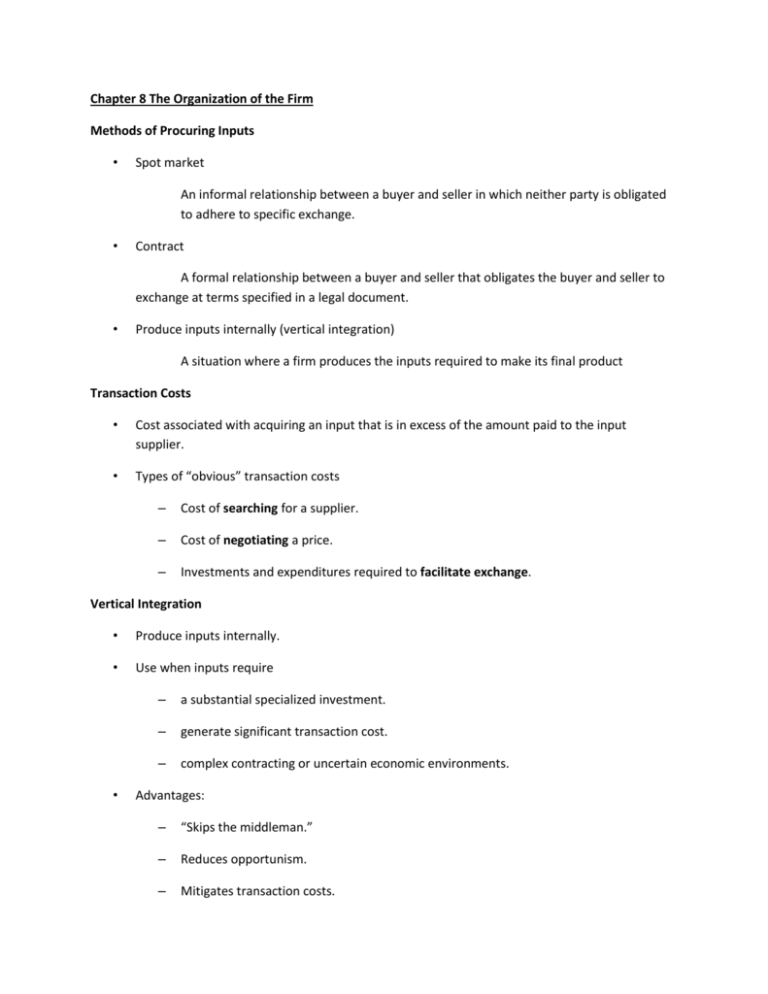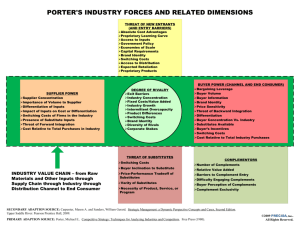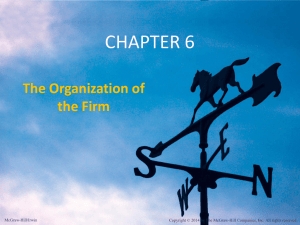Chapter 8 The Organization of the Firm Methods of Procuring Inputs
advertisement

Chapter 8 The Organization of the Firm Methods of Procuring Inputs • Spot market An informal relationship between a buyer and seller in which neither party is obligated to adhere to specific exchange. • Contract A formal relationship between a buyer and seller that obligates the buyer and seller to exchange at terms specified in a legal document. • Produce inputs internally (vertical integration) A situation where a firm produces the inputs required to make its final product Transaction Costs • Cost associated with acquiring an input that is in excess of the amount paid to the input supplier. • Types of “obvious” transaction costs – Cost of searching for a supplier. – Cost of negotiating a price. – Investments and expenditures required to facilitate exchange. Vertical Integration • Produce inputs internally. • Use when inputs require • – a substantial specialized investment. – generate significant transaction cost. – complex contracting or uncertain economic environments. Advantages: – “Skips the middleman.” – Reduces opportunism. – Mitigates transaction costs. • Disadvantages: – Managers must create an internal regulatory mechanism. – Bear the cost of setting up production facilities. – No longer specialized in producing its output. Compensation and the Principal-Agent Problem • Having learned about the principal factors in selecting the best methods of acquiring inputs, we now explain how to compensate labor inputs to put forth maximal effort. • The primary obstacle is the separation of ownership and control. – – Principal-agent (P-A) problem leads to the following question: Is poor performance due to • back luck? • low manager effort? Owners have to incent managers since they are not present to monitor. Incentive Contracts • A way to align owners’ interests with that of the actions of its manager. • Examples include: • – Stock option – Other bonuses directly related to profits. Outside forces can provide manages with the incentive to maximize profits, and include: – Reputation. – Takeover threat. Solutions to the Manager-Worker Problem • Manager-worker principal-agent problem solutions: – Profit sharing. – Revenue sharing. – Piece rates. – Time clocks and spot checks.









